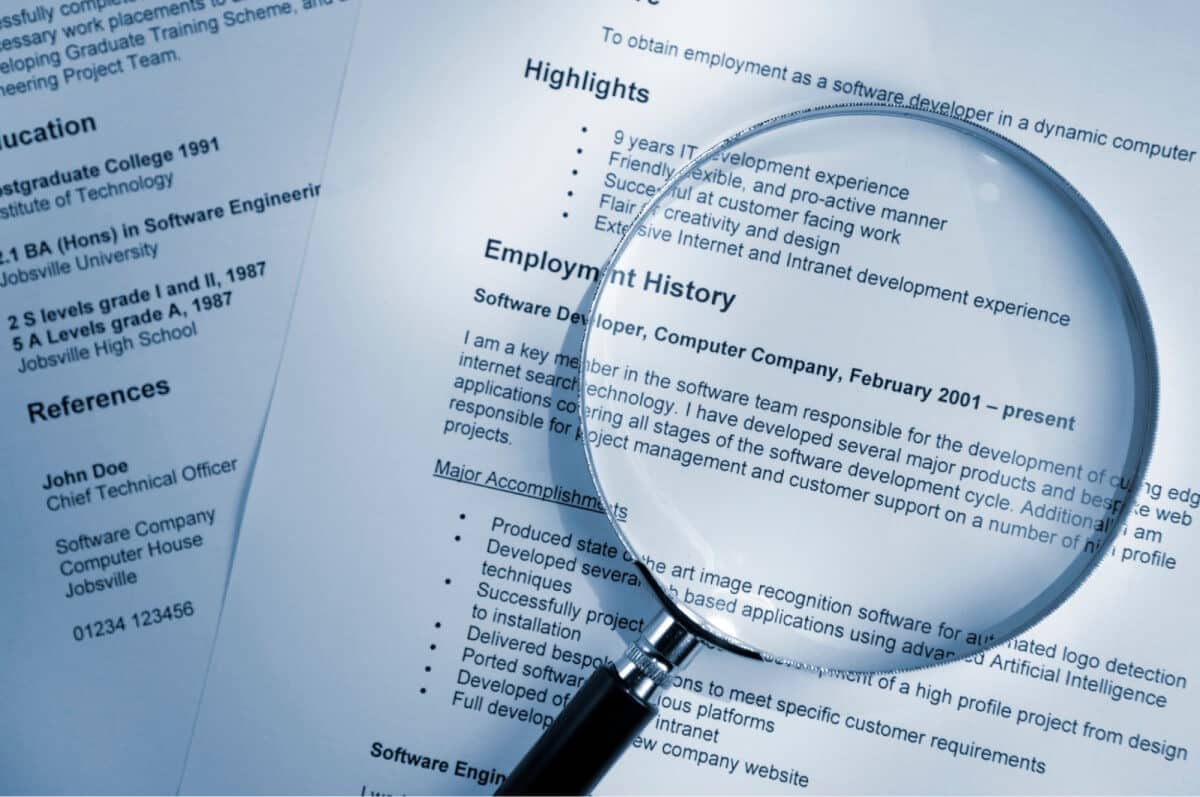Implementing a Learning Management System is one of the best investments you can make. Are you looking to implement your organisation’s first (or next) Learning Management System (LMS)? If so, choosing the right platform and provider can be a challenge in itself. Even after you’ve chosen a provider, you need to implement, test and refine it before your formal launch! Check out this free guide, which contains a free printable checklist you can use to make your implementation a success.
In this guide, navigate to:
- Identify your goals
- Choose a provider to meet your needs
- Appoint a project manager and implementation team
- Gain buy-in from key stakeholders
- Map out your implementation plan and timeline
- Consider how your LMS aligns with your wider HR processes
- Consider the end user experience
- Do a soft launch
- Go live with your new system
- Continue to work towards your goals
- Printable checklist
Implementing a Learning Management System is one of the best investments you can make to train your employees, improve retention, ensure compliance and increase engagement. However, many organisations struggle to implement and launch their new systems properly.
Are you looking to implement your organisation’s first (or next) Learning Management System (LMS)? If so, choosing the right platform and provider can be a challenge in itself. Even after you’ve chosen a provider, you need to implement, test and refine it before your formal launch!
To help you succeed, we’ve created an easy-to-use implementation guide and checklist with all the important milestones for you to keep in mind throughout the process.
Implementing a Learning Management System can seem like a daunting task – but it doesn’t have to be! Use the following best practices and success will follow.
1. Identify your goals
Organisations implement a Learning Management System for different reasons, depending on their goals and needs. What are your goals and the top challenges you’re looking to address with an LMS? For example, some organisations set goals to:
- offer employees professional development
- onboard new employees effectively
- ensure everyone has compliance training to operate safely and efficiently (e.g. WHS)
- address risk management
- improve retention
- boost engagement rates
- report on learning progress and completion rates
- develop leaders
- ensure succession planning.
Perhaps your goals include a mix of all of the above. If so, select your top goals and break the rest down into stages. (You don’t have to hit all your milestones before your launch!). Being selective will prevent you from feeling overwhelmed by everything you want to achieve. When establishing milestones, think about how you will measure success.
While it’s great to understand your goals before investigating LMS providers, it can also be helpful to work with your provider to define and refine your goals, and establish milestones together.
Download your free copy of the guide:

2. Choose a provider to meet your needs Identify your goals
Typically, LMS providers offer software and implementation support. Partnering with an LMS specialist (or team of specialists) will help you execute your plan to achieve your organization’s learning and development goals.
When vetting Learning Management System providers, ask what kind of support they offer in terms of training and resources. Is it enough to meet your needs?
You need to feel confident that your implementation team will understand your problems and give you strategic advice about how to achieve your goals. They’ll look at more than just the technical side of things and will work to see the bigger picture of how your LMS will fit into your wider business objectives.
Selecting the right LMS provider is only half the battle. After you’ve done your research, identified your organization’s needs, reviewed LMS vendors, and negotiated the best price… it’s time for the real challenge to begin. To get the most out of your new system, you’ll need to implement and integrate it into your organization’s existing structure.
3. Appoint a project manager and implementation team
Will you be the primary point of contact between your LMS provider and your organization? If so, as the project manager, you’ll be responsible for acting as the “bridge” between your supplier and end users. You’ll act as a champion for the project and lead communication.
Your LMS will likely intersect with different operations in your organization, so choose who else needs to be involved. In building a team to oversee, connect team members from those various departments, such as HR, IT, and Learning and Development. In implementing a Learning Management System and designing your communication plan, you may also like to get your marketing team involved.
Work closely with your LMS provider, and maintain strong, open communication with them and your team. This will ensure your implementation works in line with your goals and that you reach milestones within necessary timeframes.

4. Gain buy-in from key stakeholders
It’s time to create some excitement about your new system! If your key stakeholders don’t know a Learning Management System is coming, they won’t be excited about it and your launch won’t be successful. Consider who your end users are. It’s up to your implementation team and project leaders to get them engaged and ready to use the system.
What can you and your team do pre-launch to get people excited? In implementing a Learning Management System, let your communications representative take the lead in promoting your Learning Management System. For example, you might like to send emails or create a flyer or a video. What about a survey to get input about what kind of content people want to see, or understand what they’d like to get out of a new system?
They’ll also need access to training resources. Work with your LMS provider to organize a few training sessions, a guide about how to use the system and a video as part of your implementation. Some providers even offer in-app support. This collection of resources forms a great “toolkit” to help your people become experts and use your new LMS confidently.
“Work with your LMS provider to organise a few training sessions, a guide about how to use the system and a video as part of your implementation.”
5. Map out your implementation plan and timeline
In creating an implementation plan and timeline, be sure to set realistic expectations. Your implementation plan should be mapped out in clear stages and include:
- your key stakeholders
- the key challenges you’re looking to address
- the proposed solution
- what your provider needs from you
- communication cadence between you and your provider – for example, this might be once per week before your launch date, then once per quarter after your launch date (more or less, depending on your needs)
- links to key resources
- your partnership journey – that is, a staged plan of your first 12 months, including:
- months 1-3 of your implementation
- a post-implementation review and customer development plan
- quarterly reviews.
Your provider may also be able to provide you with an “implementation document” that includes:
- training video recording(s)
- an outline of key features
- information they require from you and your implementation team to configure your LMS
- implementation timeframes and task allocation (including kick off, implementation document due date, upcoming training sessions etc.).
Tip: You may have more goals that you can address and work towards after your implementation.
6. Consider how your LMS aligns with your wider HR processes
You may need to integrate your LMS with existing HR systems and processes. If you have a payroll system, onboarding system or HRMS (Human Resources Management System), establishing an integration can result in time and cost savings, and help you track employee training rates. In implementing a Learning Management System, decide what data needs to move between your systems and how you’ll accomplish it. Will new employees receive the online training they need? Work with your HR team member to create the best possible experience.
Some common system integrations for large organizations include:
- User accounts and profiles – your LMS may need to integrate with a system containing user accounts and profile information, e.g. an HRMS containing employee information. (If you don’t have a system containing user accounts, you may need to configure your LMS to create and manage user accounts.)
- Single sign-on (SSO) – some organizations use single sign-on to avoid requiring end users to log in to different systems with different logins. This allows them to login to your network once and circumvent login pages for different systems. If your organization uses SSO, put your provider in touch with your IT team.
- Search – some organization integrate their LMS with search platforms, enabling users to search for content and obtain a list of training from their LMS, as well as information documents from their content management system. This allows people to search for information and training in a single location. You can also configure your LMS to display similar results and suggestions, like search engines.
Rely on your LMS provider to get the right guidance and support.
7. Consider the end-user experience
When working with your provider, consider the following. Will users be able to access the information they need quickly and easily? Is the system engaging and enjoyable?
You’ll need to give your users access to training. Your provider might have a range of off-the-shelf content perfect for your needs. You may have mix of content; some off-the-shelf content from your provider, and some internal documents you want to upload and use as part of training.
Depending on your organization’s existing assets, budget and goals, you can choose to use three types of content:
- commission custom-made content
- build your own content in-house
- use off-the-shelf content.
Did you know: 30% of L&D professionals aim to incorporate simulations and games? (eLearning Industry).
Can you incorporate gamification into your new system? Gamified learning is becoming increasingly popular in workplace training because of how it engages people. Gamification is the process of applying game-design elements and principles into non-game contexts. It’s the set of activities and processes to solve problems by applying characteristics of game elements. For example, point scoring or competition. Talk to your LMS provider about incorporating gamification elements.

Check out our tips for increasing learning engagement through gamification here.
8. Do a soft launch
Before launching, it’s important to test your system before it goes live by doing a test run.
Offer a training class for users to test your new system. See how your LMS works in your organization’s usual training scenarios. In this test run, check all your features, including: course delivery, learning profiles, completion tracking and reporting.
Obtain feedback from your learners about how they find using the system each time they use it. During training, ask the facilitator to note down their observations about how learners are using the system. (Or observe and take notes yourself!). You can also conduct surveys to gain more feedback about the system.
Tip: Decide what feedback you need to work on, what parts of your process can be changed or improved, and how ready your learners and facilitates are when it comes to rolling out your LMS across your organisation.
After obtaining feedback, it’s time to evaluate what you’ve learned and refine the process. This is a crucial part of any implementation process. Not only will you obtain valuable information about your learners, you’ll also gain critical insights about how to use your LMS to your organization’s best advantage. You can also use this feedback to determine the best way to integrate your LMS into your organization’s training processes.
Decide what feedback you need to work on, what parts of your process can be changed or improved, and how ready your learners and facilitates are when it comes to rolling out your LMS across your organization.
9. Go live with your new system
Congratulations! You’ve done the work and are ready to go live with your new system. You’ve tested, refined and built excitement in your organization about the launch. Go live only when you’re feeling confident and ready. Remember though, implementing a Learning Management System doesn’t stop at the official platform launch. It’s just the start of, what will hopefully be, an enjoyable and exciting journey.
10. Continue to work towards your goals
Creating a post-implementation plan is the second part of ensuring success. Continue to work with and receive feedback from your key stakeholders. How many users are progressing through the system? How do they score? This data doesn’t form the complete picture of user satisfaction and experience, but it’s a great place to start.
Continue to work towards your goals. How will you assign and report on learning? How can you share and promote results and continue to generate excitement about the system?
Tip: Stay in touch with your vendor and conduct regular reviews to ensure you’re getting the most out of your system, achieving your additional goals and learning about any new system improvements.
For some organizations, you might like to take the lead with implementation, but want team leaders and managers to take more ownership of the system after it goes live. Can you offer them training and support?
Continue to offer training and support, and have resources and documentation on hand. Stay in touch with your vendor and conduct regular reviews to ensure you’re getting the most out of your system, achieving your additional goals and learning about any new system improvements.
The success of your initiative will depend on how much value it brings your organization as a whole. Keep in mind, there may be a few hiccups along the way, so ensure you and your team are prepared and flexible enough to handle these when they arise.
Free, printable checklist
Get your free copy of the guide:

About the authors

Natasha Scott
Natasha is an Account Manager for Scout Talent. She has certifications in Learning Management Systems and has extensive experience supporting clients with Scout Learning. In her current role, she delivers tailored solutions, training and support for users of Scout Talent’s recruitment software products and services. With a background in business development and account management, she is passionate about building relationships, developing learning cultures and getting the best value for clients.

Jennifer Fleay
Jennifer is a Learning Services Specialist for Scout Talent Group. She is an experienced Learning and Development Coordinator with a demonstrated history of working in the sales recruitment and training industry. Jennifer has spent her professional career developing herself as an effective and efficient learning specialist, transitioning from a focus on sales recruitment, onboarding and training to successfully partnering with clients to implement learning management software solutions, all the while developing her capabilities as an instructional designer. She loves collaborating to deliver learning solutions and creating impactful, engaging e-learning courses on behalf of her clients.
Contact the Scout Talent team today about our LMS, Scout Learning, call us on 1300 366 573 or email info@scouttalent.com.au.








